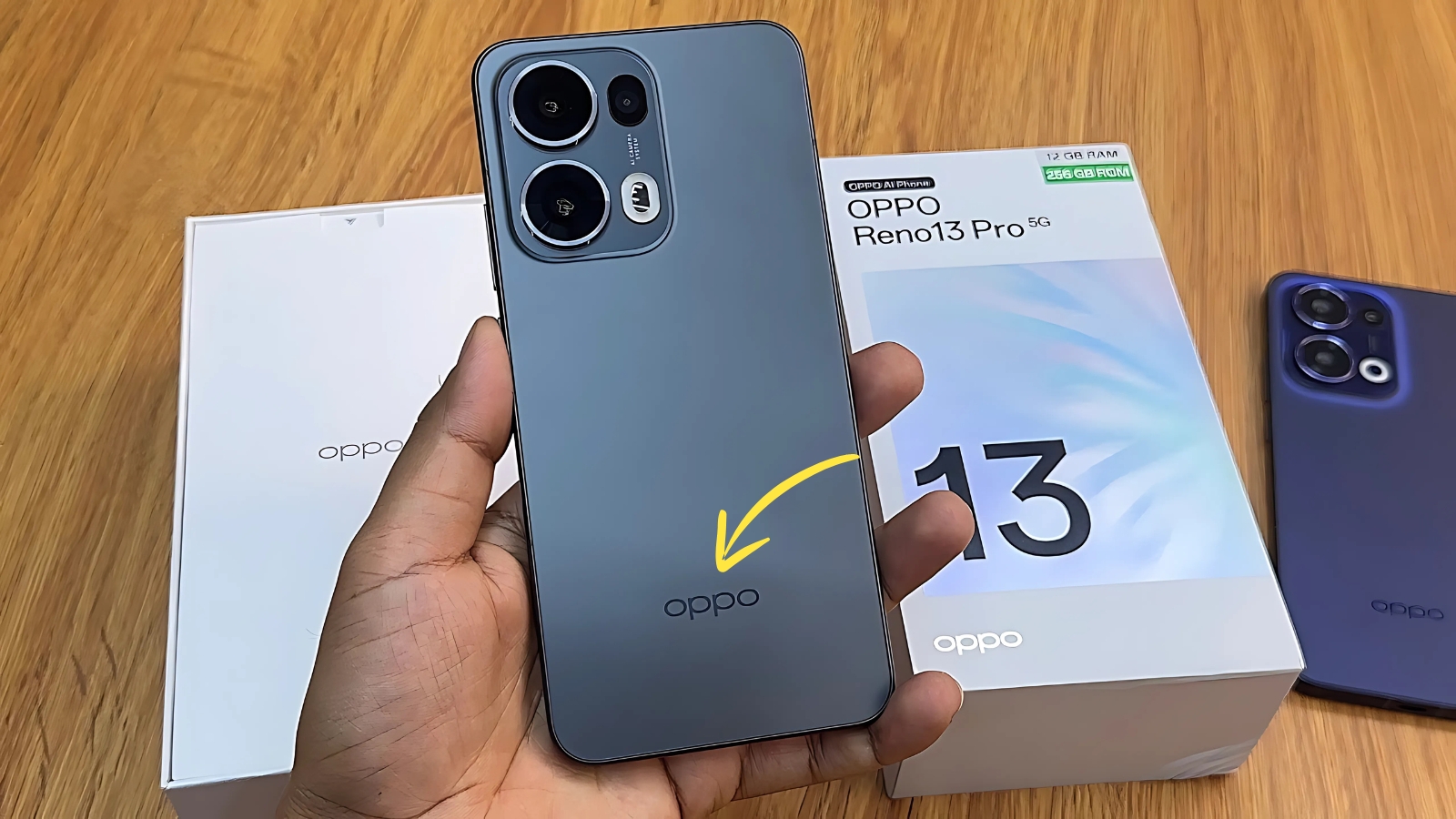Oppo Reno 13 Pro : When the courier dropped off the Reno 13 Pro review unit last Thursday, my initial reaction wasn’t exactly enthusiastic. Previous Reno devices often felt like design exercises lacking identity – borrowing elements from competitors without establishing their own character. This time feels different.
The moment you lift the Reno 13 Pro from its packaging, there’s an immediate sense that Oppo’s design team finally found their voice. The 7.55mm profile somehow accommodates a massive 5,800mAh battery without feeling bulky. The weight distribution – often overlooked by spec-focused reviewers – deserves special mention. At 195g, it strikes that elusive balance between substantial and unwieldy.
I’ve accidentally dropped the phone twice during my testing period (once onto hardwood, once onto tile), and the Corning Gorilla Glass 7i showed zero damage. Not even microscratches. This kind of real-world durability matters far more than the contrived drop tests you’ll find on YouTube.
Display Quality That Makes Content Come Alive
The centerpiece of any premium phone experience is the screen, and here the Reno 13 Pro genuinely surprised me. The 6.83-inch AMOLED panel delivers 2800 x 1272 resolution with 120Hz refresh rate – impressive on paper, but numbers rarely tell the complete story.
What sets this display apart is its adaptive behavior. Streaming the latest nature documentary series revealed nuances in foliage and water scenes that simply don’t register on lesser panels. More impressively, the screen intelligently adjusts brightness and color temperature based on ambient conditions without calling attention to these transitions.
During outdoor testing at a sidewalk café, the brightness boost kicked in just enough to maintain visibility without decimating battery life. Later that evening, the automatic shift to warmer tones while reading made a noticeable difference in eye comfort before bed.
Camera System: Computational Photography Gets Serious
Smartphone photography has plateaued somewhat in recent years, with diminishing returns from hardware improvements. Oppo seems to understand this, focusing instead on computational approaches that extract maximum quality from sensible hardware choices.(Oppo Reno 13 Pro )
The Sony IMX890 50MP main sensor delivers consistent results across lighting conditions, but what impressed me most was how the processing adapted to my preferences over time. After manually adjusting several early shots to reduce oversaturation, I noticed the camera began producing more natural colors by default.
Low-light performance exceeded my expectations, especially considering the price point. Night mode shots captured during an evening walk along the riverfront retained surprising detail in shadow areas without blowing out neon signs and streetlights. Indoor photos in a dimly-lit restaurant showed effective noise reduction without the “watercolor effect” that plagues aggressive algorithms.
The 8MP ultrawide remains the system’s weakness – acceptable in good light but struggling in challenging conditions. The telephoto implementation, however, delivers genuinely useful 2x optical zoom rather than the digital crop many competitors try to pass off as “zoom.”
Performance That Prioritizes Consistency Over Momentary Speed
MediaTek’s Dimensity 8350 chipset powers the Reno 13 Pro, paired with either 12GB or 16GB RAM. Rather than chasing benchmark records, Oppo has clearly optimized for sustained performance and thermal management.
This approach pays dividends during extended gaming sessions. Testing popular MOBA titles revealed consistent frame rates without the throttling that often occurs after 30+ minutes on other devices. The phone warmed slightly during intensive use but never approached uncomfortable temperatures.
Day-to-day performance feels effortlessly fluid rather than artificially snappy. App switching, content creation, and multitasking happen without hesitation or stutters.
Battery Life That Changes User Behavior
Perhaps the most transformative aspect is the combination of massive battery capacity and genuinely fast charging. The 5,800mAh cell consistently delivered two full days of moderate use, fundamentally changing how I interact with the device.
The 80W SUPERVOOC charging isn’t just marketing – plugging in for 15 minutes while getting ready in the morning consistently added 40-45% charge, enough for most of a day’s usage.
Vivo X200 Pro 5G – Shandar camera quality launch with 512GB storage
Oppo Reno 13 Pro The Verdict: A Mature Product in a Crowded Market
Priced at ₹49,999, the Reno 13 Pro occupies the increasingly competitive “premium mid-range” segment. What sets it apart isn’t any single revolutionary feature but rather the mature, cohesive experience it delivers.
For users willing to look beyond the usual flagship names, the Reno 13 Pro represents one of the more compelling options available today – not because it reinvents the smartphone, but because it refines the experience in ways that actually matter.

